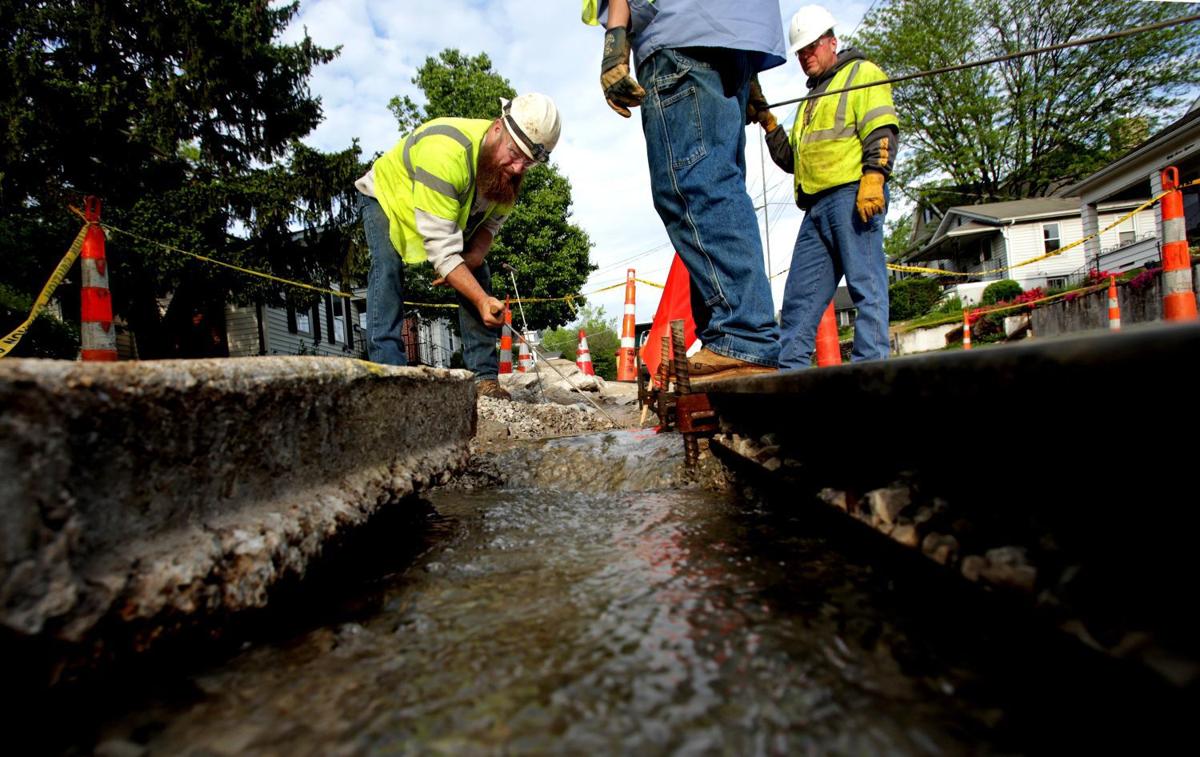Out of the Missouri American Water Co.’s 450,000 customers, an estimated 28,000 — or approximately 6% — own lead service lines, which pipe water into homes from water mains.
The percentage used to be slightly higher, but since 2017, the investor-owned water utility — which serves much of �����Ӱ�ԭ�� County along with other pockets of the state — has swapped in about 2,000 replacements. It’s part of an effort to gradually remove lead service lines — and the health risk posed by lead exposure, which is particularly dangerous to children — over the next decade and beyond.
That pace, though, puts things a bit behind its originally envisioned schedule.
“The plan was to replace all of them with about a 10-year window, which would be about 3,000 a year, instead of the just over 2,000 that we’re at now,” said Bruce Aiton, the company’s director of engineering, in an update on the program provided earlier this week to state utility regulators at the Missouri Public Service Commission.
People are also reading…
The rate of progress is influenced by the fact that finding and replacing lead service lines is not a factor used by the company to prioritize its infrastructure projects, Missouri American officials said. Instead, lead lines are simply replaced as the company comes across them while updating adjacent water mains.
“As we replace water mains under our normal process, we will identify and replace lead service lines that we come across, but we’re not specifically targeting areas that we think have large amounts of lead service lines,” said Brian LaGrand, the company’s director of rates and regulatory support.
The current system of project prioritization is primarily based on the rate of water main breaks in a certain area, as well as coordination with municipalities that are doing infrastructure projects of their own.
“If they have a road project, it makes sense to go in and replace that pipe in conjunction with that,” said Aiton.
PSC Commissioner Daniel Hall applauded the utility’s execution of its PSC-approved lead line replacement plan overall, but did not seem pleased when Aiton said that the company “would be maybe a little bit more aggressive” if it were allowed to earn a return on its investment, rather than simply being reimbursed for the work and accrued interest.
“Because of the regulatory treatment, we’ve deprioritized some of that,” Aiton said. “That’s the reality.”
“Oh, man. That is not a good answer,” said Hall. “It’s a bean-counter answer.”
The company said it has spent around $8.5 million on its approximately 2,000 lead service line replacements so far. But because the lines are technically owned by customers, and not by the company, the work is not treated like a traditional utility expenditure — meaning the company is only paid back instead of being allowed a margin of profit.
Although lead service lines present a health hazard, because of the age of the pipes and the way the water is treated, there is built-up lime and scaling on the inside of the lines that block contact between water and the lead, Missouri American officials said.
“As long as the service line is not disturbed, the customer is OK, but it’s the disturbance that happens when we replace a line that can knock loose that lime scaling that you see on the inside, and cause the customer to be exposed to lead,” said LaGrand, adding that lines are flushed out after replacement.
Records about where lead service lines exist are not always intact or accurate, company officials said. But many went into place in communities with older homes developed after World War II, such as University City, according to Brian Russell, Missouri American’s external affairs manager.
He said that recent high-profile cases of lead contamination in Flint, Mich., “brought the issue of lead in water to the forefront” nationally. But now, he said water utilities and governments are tasked with learning the extent of the problem in addition to figuring out how to fund lead line replacement.
“This is something that every water utility is going to deal with before long,” said Russell. “We’re trying to be transparent. … We don’t own those (lines), but we’re still replacing them as we come across them because we know that’s what is best.”













